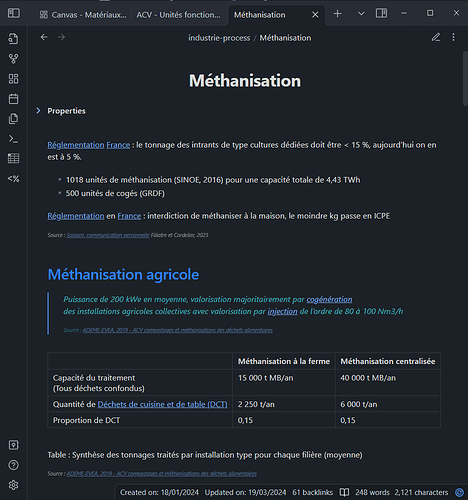Foreword:
Sourcing content is essential to me to be able to judge on reliability. It also helps to go back to the original source, in order to contextualize or correct potentially erroneous content.
That being said, here’s how I achieve that.
Example note with sources
Explanations
In the screenshot above, you can see an example of the two ways I use for citing content:
- Quoted content (in blue)
- Paraphrased/adapted content (in white)
Both of them have a “Source : …” line below them to cite original sources.
I can always use square brackets to add interpretation in quoted text (e.g., [some interpretation], example in screenshot below), which is a conventional editorial practice. I also use [...] to remove unnecessary intermediate text to focus on what’s interesting to me. Showing this [...] allows me to know that there is missing content that I can always recover from the original source (see example in screenshot below).
Square brackets for interpretation:

Square brackets for interpretation:

Template
Quick adds source: I have made a template (Templater), see code below.
> <% tp.file.selection() %><% tp.file.cursor() %>
>
> Source : <% tp.file.cursor() %>
I have a keyboard shortcut, it’s also pinned in the command palette (screenshot below). You could also assign a hotkey to the “toggle blockquote” Obsidian internal command.
Bibliographic entries
Whenever I cite several times a specific paper/report/or any type of reference, I would create a new note for it in a “Bibliography” folder. Links are internal links, see above screenshot.
If my source has not been published or was told to me, I add the internal link “Personal communication” (see screenshot below).
Appearance
The “Source : …” line is small in reading and preview mode deliberately. Indeed, it’s not the first class information. I want to be able to keep it visible, while not being disturbing comparing to the actual main content.
To achieve that, I made a plugin (unpublished) to assign a CSS class to this line. Then I can use custom CSS (snippets) to make the line smaller and faded out compared to normal content.
![]()




